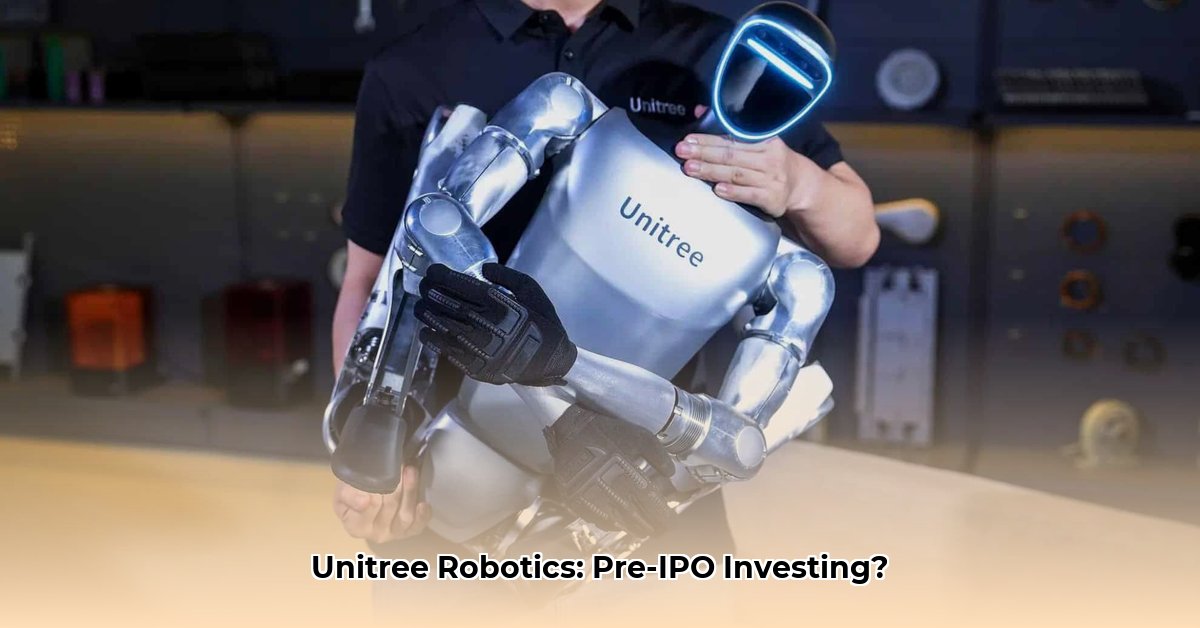
Investing in pre-IPO companies carries inherent risk, but the potential rewards can be substantial. Unitree Robotics, a prominent player in the burgeoning legged robotics market, presents a compelling case study. This guide provides a comprehensive overview, enabling you to make informed investment decisions. For more on navigating the complexities of emerging tech investments, see this helpful guide on Web3 investing.
Understanding the Legged Robotics Market
The robotics industry is experiencing explosive growth, fueled by advancements in artificial intelligence (AI) and powerful computing capabilities. This expansion is transforming numerous sectors, from healthcare to e-commerce. Legged robots, a specialization of Unitree Robotics, represent a particularly dynamic segment within this market. Will this niche continue its rapid expansion in the next decade? The answer could significantly impact Unitree's prospects.
Unitree Robotics: A Deep Dive
Unitree Robotics differentiates itself through its focus on both consumer and industrial applications of legged robots. This dual approach presents both opportunities and challenges. While diversification broadens its potential market, it also requires navigating diverse regulatory landscapes and competing against established players in each sector. Does Unitree possess sufficient resources to effectively compete across these markets? This question forms the core of a thorough risk assessment.
Assessing the Risks and Rewards
Before investing, a thorough understanding of potential risks is paramount. These risks aren't insurmountable, but they require careful consideration:
Key Risk Factors:
- Intense Competition: The robotics market is highly competitive, with established giants and innovative startups vying for market share. Unitree's ability to maintain a competitive edge relies on continuous innovation and strategic market positioning.
- Technological Disruption: Rapid technological advancements mean that Unitree's current offerings could become obsolete quickly. Continuous R&D and adaptability are crucial to long-term success. What is Unitree's current R&D budget as a percentage of revenue? This ratio provides insight into their commitment to innovation.
- Regulatory Hurdles: Navigating complex and evolving regulatory landscapes, differing across geographic regions and application domains (consumer vs. industrial), poses substantial challenges and potential delays. How effectively is Unitree navigating these regulatory environments?
Potential Rewards:
- Market Growth: The overall robotics market is experiencing significant growth, positioning Unitree for substantial expansion if it can capture a significant market share.
- Technological Innovation: Unitree's innovative approach to legged robotics gives it the potential to disrupt established markets and create new applications.
- First-Mover Advantage: As a first-mover in certain market segments, Unitree has the opportunity to establish brand recognition and customer loyalty.
A Practical Investment Framework
This methodical approach will help you navigate the complexities of a pre-IPO investment:
- Technological Due Diligence: Conduct a thorough assessment of Unitree's technology, comparing it to competitors and identifying its unique selling propositions (USPs) and potential weaknesses. Analyze patented technologies, publications, and intellectual property.
- Market Analysis: Evaluate the size and growth potential of the target markets (consumer and industrial). Consider market segmentation and Unitree's competitive positioning within these segments.
- Financial Projections: If available, scrutinize Unitree's financial projections, comparing them to industry benchmarks and considering the inherent uncertainties of a pre-IPO company. Are their projections realistic given the market dynamics and competitive landscape?
- Risk Assessment: Revisit the risk factors and quantify their potential impact on Unitree's financial performance. Develop a risk mitigation strategy. How effectively does Unitree's financial modeling factor in these risks?
- Portfolio Diversification: Never concentrate your entire investment portfolio in a single, high-risk asset. Diversification across multiple asset classes is crucial for managing risk.
- Regulatory Compliance Assessment: Analyze Unitree's regulatory strategy and the extent to which they've addressed potential compliance issues. A strong regulatory approach is essential for long-term sustainability.
Navigating Regulatory Hurdles: A Critical Factor
Regulatory compliance is crucial for robotic startups. Non-compliance can lead to substantial delays, fines, and reputational damage. A robust regulatory strategy should begin at the design stage, integrating compliance requirements into the product development process.
Key Considerations for Regulatory Compliance:
- Early Planning: Integrate regulatory considerations into the design process from inception, not as an afterthought.
- Risk Assessment: Conduct thorough risk assessments (ISO 14971) to identify and mitigate potential hazards.
- Standard Compliance: Strictly adhere to relevant international and regional standards (e.g., ISO 13485, FDA regulations, CE marking).
- Expert Legal Counsel: Engage legal counsel specializing in robotics and regulatory compliance.
Conclusion: Informed Investment Decisions
Investing in Unitree Robotics requires careful assessment of potential risks and rewards. Thorough due diligence, a long-term perspective, and a diversified portfolio are crucial. Remember, this is not financial advice; conduct your own research and consult with a financial advisor before making any investment decisions.